Elisabeth Anderson-Sierra is a supermom of three who’s nourished her kids and saved countless lives, including fragile premature babies, with her milk magic. This mom smashed the Guinness World Record for the largest donation of breastmilk by a single person. In three years, she donated a jaw-dropping 1,599.68 liters (or 422.59 gallons) to a milk bank. To put that in perspective, that’s like filling up 800 two-liter soda bottles or making over 2,200 Starbucks Venti lattes. Take that, caffeine!
Meet the mom who pumps enough for a dairy farm.
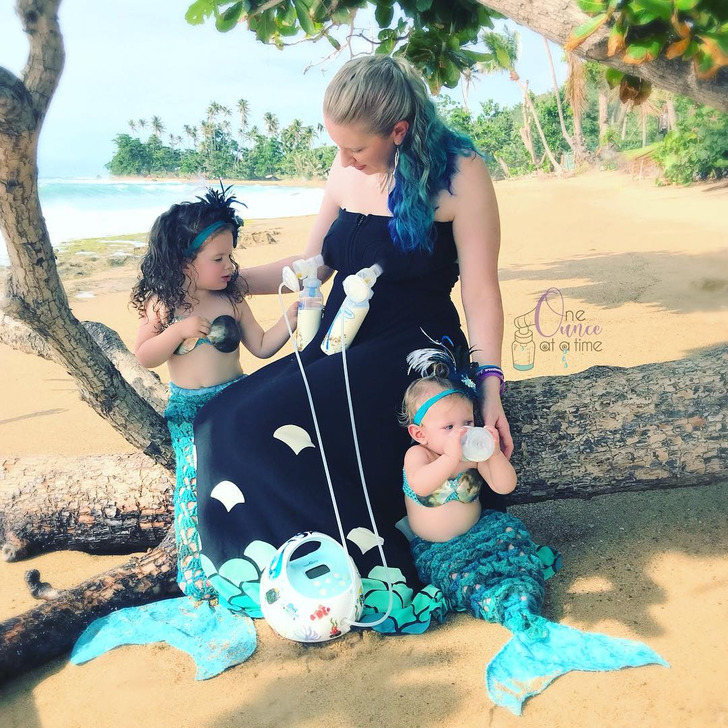
“This only accounts for milk I donated to a milk bank between 2015 and 2018,” Elisabeth explains. The record doesn’t even include the milk she’s shared with families around the globe. Over nine years, Elisabeth has helped local families and international recipients, estimating her total donations exceed 350,000 ounces!
Elisabeth Anderson-Sierra is living proof, navigating a unique breastfeeding journey shaped by hyperlactation syndrome. This rare condition causes excessive milk production, turning her motherhood experience into a heartwarming and inspiring story of resilience and generosity.
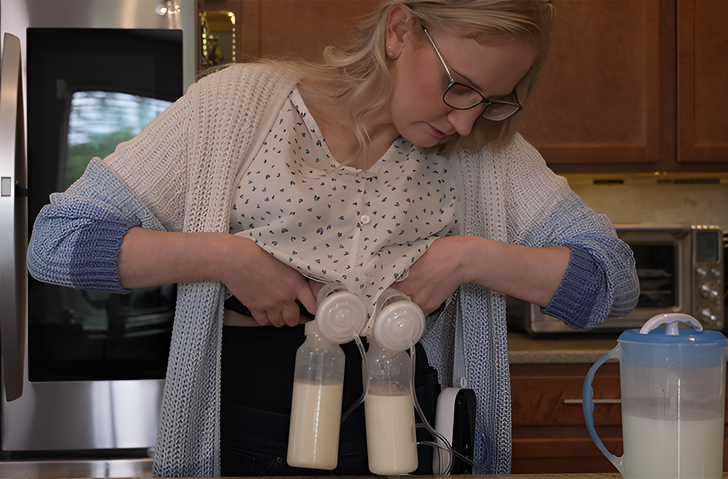
![]()
In Beaverton, Oregon, Elisabeth has earned the nickname “Milk Goddess” thanks to her unmatched ability to produce milk. Locals celebrate her as a champion of motherhood, a figure of health and wellness, and a superhero of lactation. Despite her superhuman feats, Elisabeth remains modest. “I am a mother with a gift I can share,” she says.
Due to hyperlactation syndrome, Elisabeth produces a staggering over 6 liters (1.75 gallons) of milk daily. This level of excessive milk production is rare and comes with both challenges and opportunities. For Elisabeth, it’s an intense part of her breastfeeding journey.
Elizabeth’s gift saved the life of a boy who tragically lost his mom.
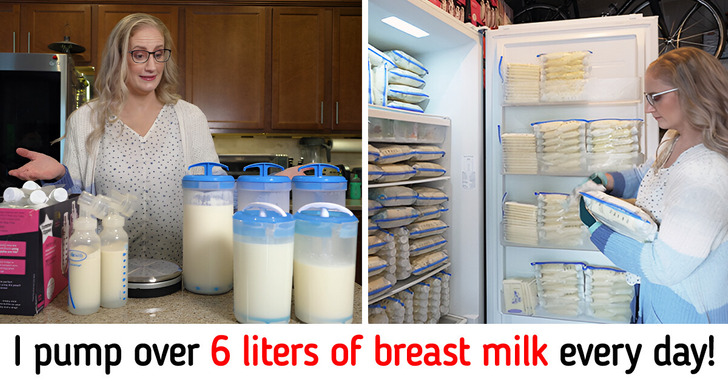
![]()
One incredible story involves her trip to Puerto Rico after Hurricane Maria in 2017. While there, she met baby Joaquin, a three-month-old who’d been born prematurely and lost his mother during childbirth. Struggling with formula and relying on costly milk bank shipments, Joaquin’s father was at his wit’s end. When Joaquin thrived on Elisabeth’s milk, she committed to shipping breastmilk to him for a full year.
Pumping milk: a full-time commitment.
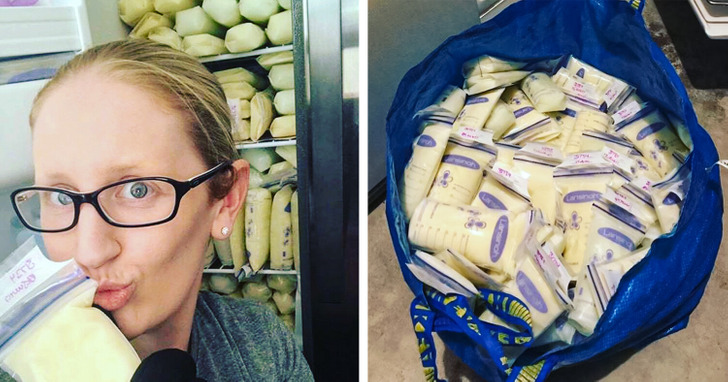
![]()
Pumping milk isn’t a casual task for Elisabeth—it’s her life. Spending four to five hours daily hooked to pumps, she manages her milk supply meticulously. “Pumping is like an Olympic sport, and I am an elite, but it is not fun. My breasts wake me up in the morning because they are screaming, ’please do something about this,’” she admits.
Pumping is physically demanding, and she faces constant breastfeeding challenges, including pain and sleepless nights. But Elisabeth’s mission goes beyond her own family. She’s a dedicated donor, sharing her surplus milk with moms in need, milk banks supporting premature babies, and gay couples.
Over the past three years, she’s donated an incredible 700 gallons of milk—double the former world record. Her work exemplifies the generosity of inspiring mothers, turning her condition into a community resource.
The cost of a milk empire.
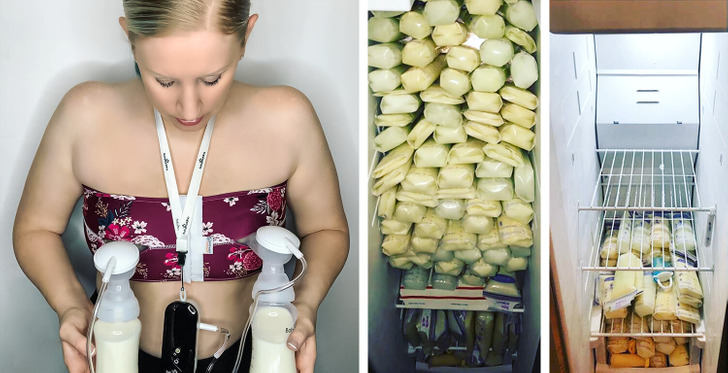
![]()
Running a one-woman dairy operation isn’t cheap. Elisabeth’s journey requires investments in pumps, supplies, and even electricity to power her four freezers. While she earns $1 per qualified ounce of donated milk, it merely offsets her expenses. “I’m not making bank here. It just keeps me going,” she explains.
Her breastfeeding journey also demands personal sacrifice. “I’m not out to make a profit. People think that I make bank, but really it just helps sustain what I do,” Elisabeth shares.
She continues, “I’ve not had a day off in two-and-a-half years. It’s more than a full-time job.” Yet, her commitment is unwavering.
Turning challenges into love.
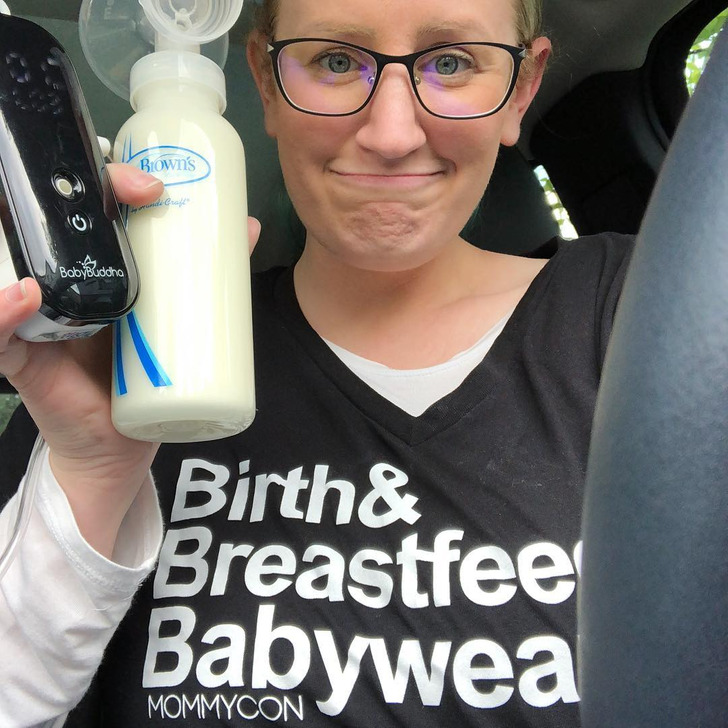
![]()
Despite the challenges of hyperlactation syndrome, Elisabeth embraces her role as a milk donor with passion. “Pumping is not fun — it is uncomfortable, and it hurts — but it is my labor of love,” she says. Her story is one of heartwarming dedication, inspiring others to give back.
A rare condition, a big impact.
Elisabeth’s story is a remarkable example of how rare conditions like hyperlactation syndrome can inspire positive change. Through her excessive milk production, she’s touched countless lives, showcasing the power of resilience, love, and community.
“This is my way of being active in my community and giving back to humanity, and so it’s my labor of love. If everybody had this kind of mentality, the world would be a better place. I feel like I am doing my part, one ounce at a time,” the woman added.
Still, Elisabeth knows she can’t pump forever. She’s considering options to reduce her prolactin levels, including medication or even a double mastectomy to halt milk production entirely. “Removing the glandular tissue would stop production, but there’s always the risk of new breast tissue forming due to hormones,” she notes.
For now, Elisabeth isn’t slowing down. She’s humbled by her Guinness World Record and hopes her story inspires others. “I’m really hopeful that breaking this record and sharing my story will normalize milk sharing,” she says with pride.
FAQ about breastfeeding

![]()
- How long should I breastfeed my baby?
Health organizations, including the World Health Organization and the American Academy of Pediatrics, recommend exclusive breastfeeding for the first six months of a baby’s life. After six months, they advise continuing breastfeeding alongside the introduction of appropriate complementary foods for up to two years or beyond, depending on the mutual desire of mother and child. - How often should I breastfeed my newborn?
Newborns typically need to be fed 8–12 times per day during the first month. Breast milk is easily digested, so frequent feedings help ensure adequate nutrition and stimulate milk production. - How can I tell if my baby is getting enough milk?
Signs that your baby is receiving sufficient milk include:
1. Regular weight gain after the initial loss in the first few days.
2. Frequent wet and soiled diapers (about 6–8 wet diapers and 3–4 stools per day after the first week).
3. The baby appears satisfied and content after feedings.
4. If you have concerns about your baby’s intake, consult a healthcare provider or lactation consultant.

![]()
- What are common breastfeeding challenges, and how can I address them?
Some common challenges include:
1. Sore nipples: Ensure proper latch and positioning; apply lanolin cream or breast milk to soothe.
2. Engorgement: Feed frequently, apply warm compresses before feeding, and cold compresses afterward.
3. Low milk supply: Increase feeding frequency, ensure proper latch, and consult a lactation consultant if needed.
4. For more detailed solutions, refer to resources like the CDC’s breastfeeding FAQs. - Can I breastfeed if I’m sick or taking medication?
In most cases, breastfeeding can continue if you’re ill, as your body produces antibodies that pass to your baby, offering protection. However, certain medications may not be safe during breastfeeding. Always consult your healthcare provider before taking new medications. - How do I store and handle expressed breast milk?
Proper storage guidelines include:
Room temperature (up to 25°C or 77°F): Up to 4 hours.
Refrigerator (4°C or 40°F): Up to 4 days.
Freezer (-18°C or 0°F): Up to 6 months is optimal; up to 12 months is acceptable.
Always label milk with the date it was expressed and use the oldest milk first.

![]()
- Is it normal for breastfeeding to be painful?
While some tenderness is common initially, significant pain is not normal and may indicate issues like improper latch, infection, or other concerns. If you experience persistent pain, seek assistance from a lactation consultant or healthcare provider. - Can I breastfeed in public?
Yes, breastfeeding in public is legally protected in many places. Mothers have the right to breastfeed their children in public spaces. If you feel uncomfortable, using a nursing cover or finding a private area may help, but it’s not a requirement. - How can I increase my milk supply?
To boost milk production:
1. Breastfeed or pump more frequently.
2. Ensure proper latch and positioning.
3. Stay hydrated and maintain a balanced diet.
4. Avoid stress and get adequate rest.
5. If concerns persist, consult a lactation consultant. - When should I introduce solid foods to my baby?
Complementary foods should be introduced around six months of age, while continuing to breastfeed. Start with iron-rich foods and gradually introduce a variety of textures and flavors.
Remember, each breastfeeding journey is unique. If you have specific concerns or face challenges, don’t hesitate to seek support from healthcare professionals or local breastfeeding support groups.
